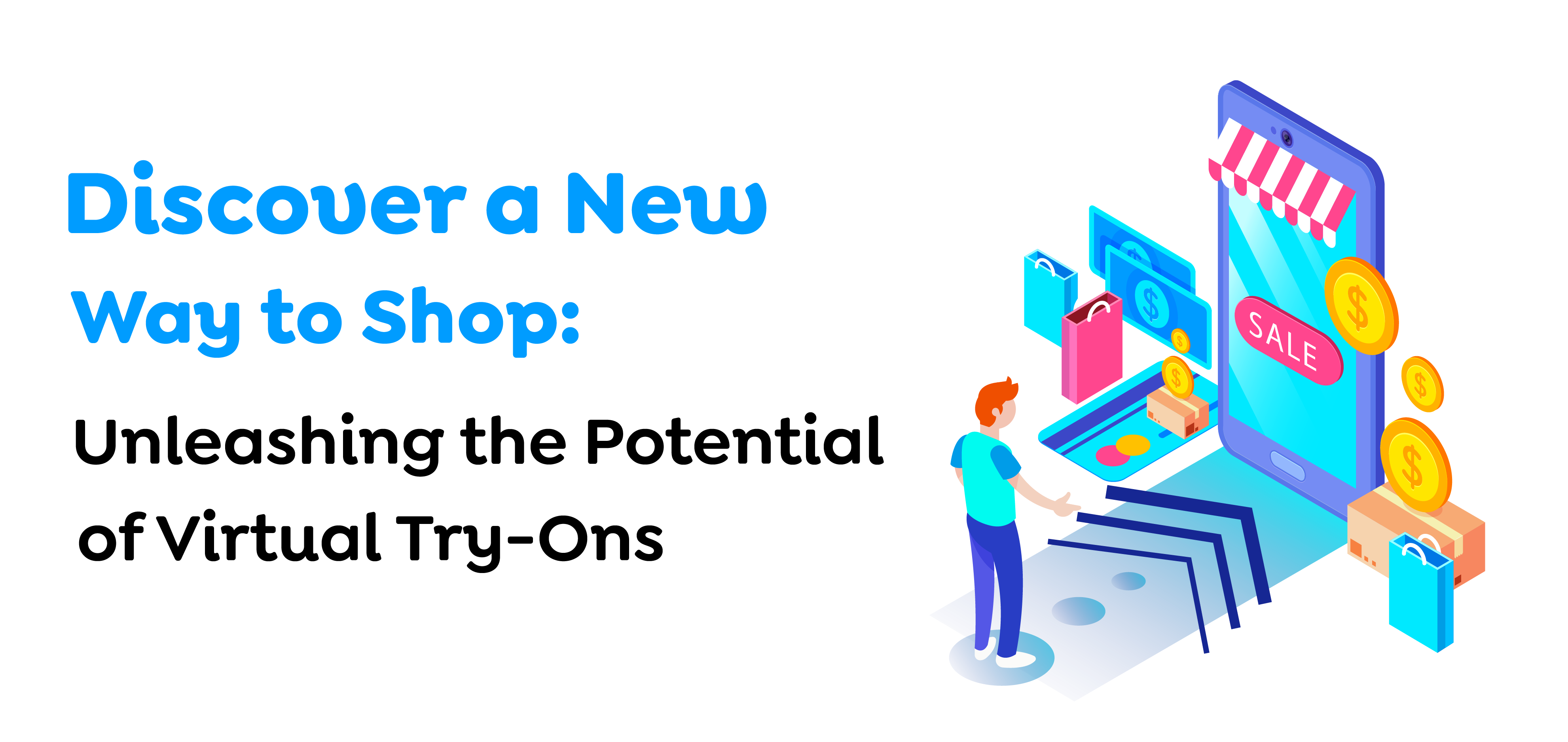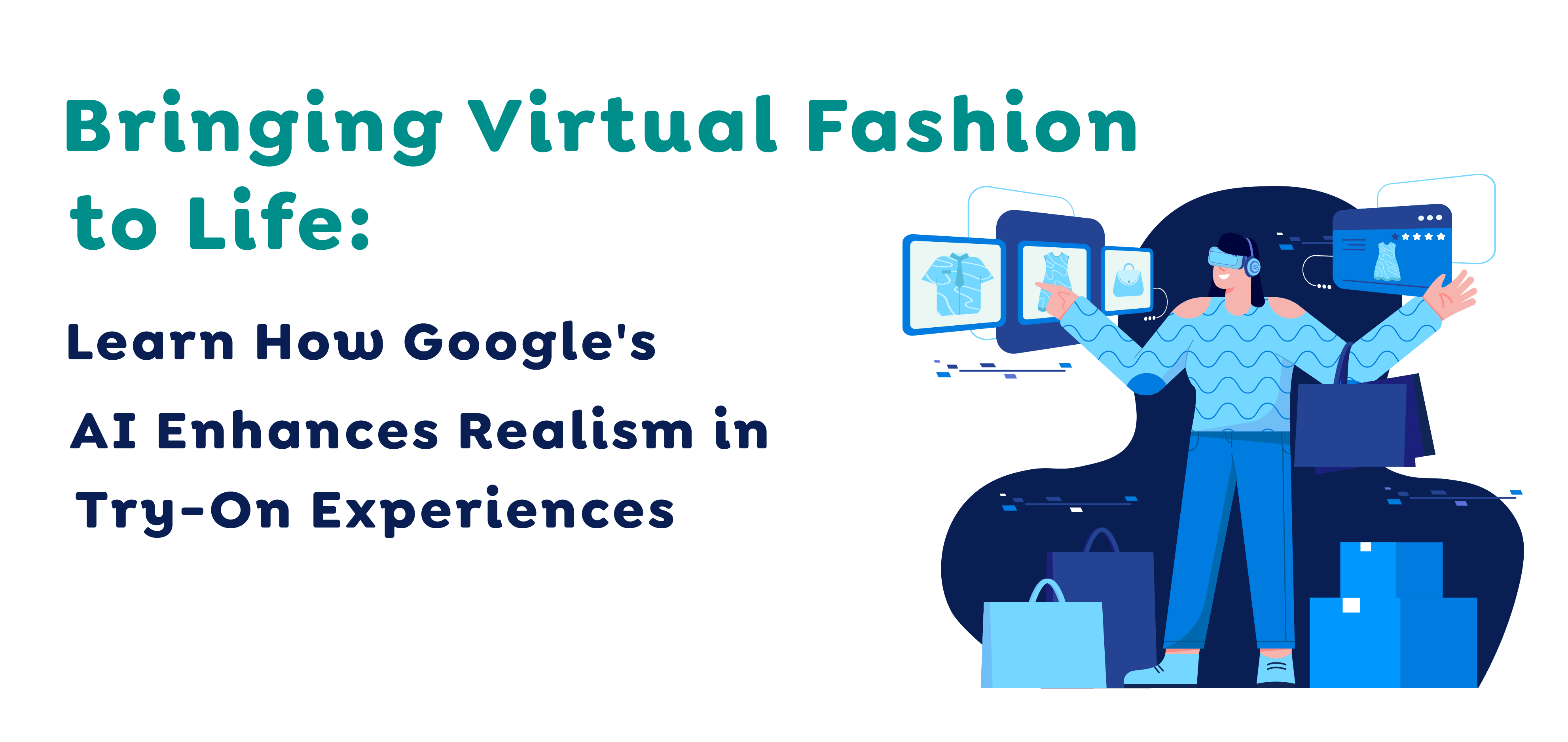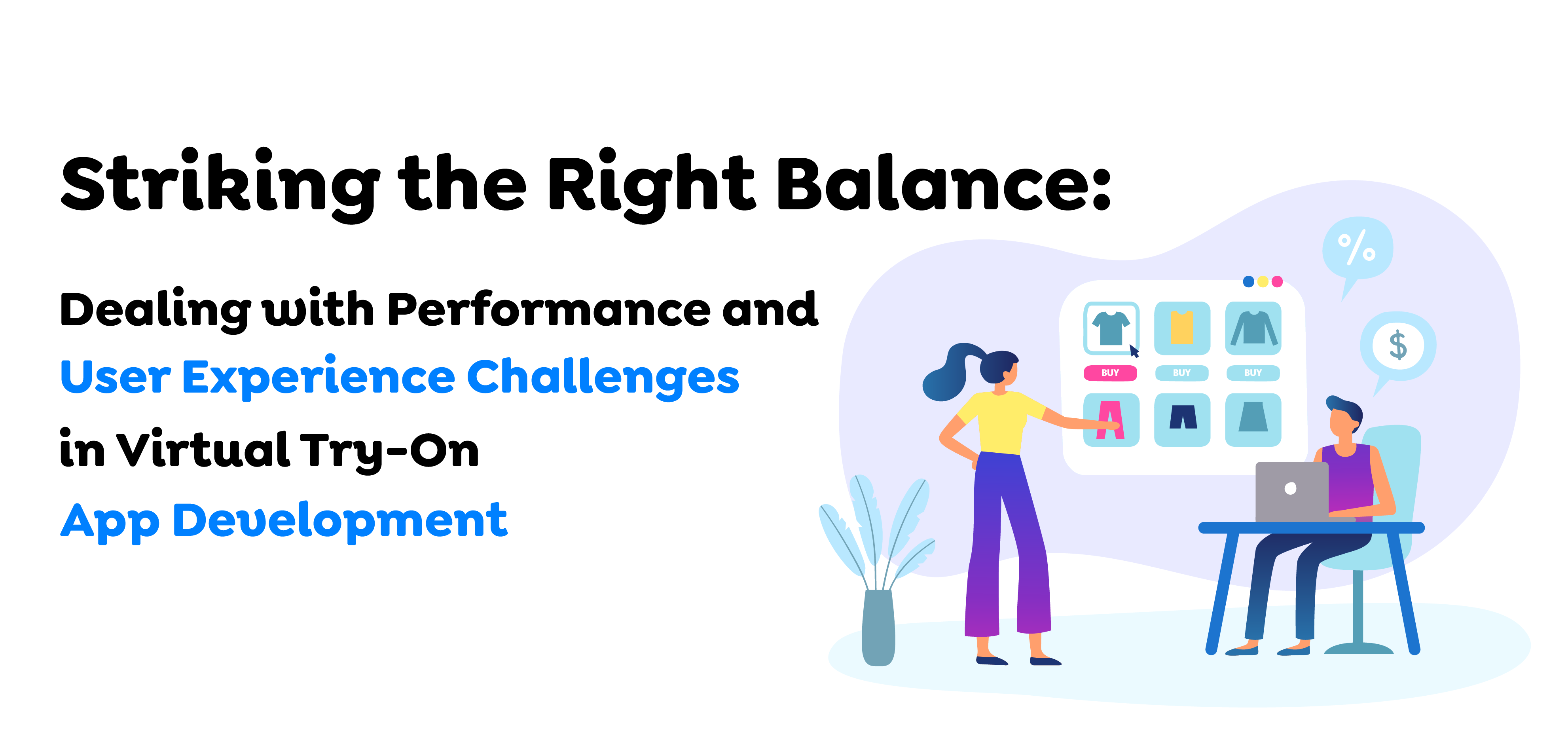Write Us
We are just a call away
[ LET’S TALK AI ]
X
Discover AI-
Powered Solutions
Get ready to explore cutting-edge AI technologies that can transform your workflow!


Have you come across influencers posting about goods and comparing them based on ‘Expectation vs. Reality?’
Forget influencers; there might have been times when you came across a beautiful dress online, but it turned out to be a disaster in reality.
Well, it’s a common issue faced by customers! They see things online and order the same, even if it’s non-returnable, only because the goods look too intriguing.
According to research, more than 70 percent of people struggle to buy clothes that fit perfectly. Therefore, it leads to a higher rate of returns, which may cause a massive loss to the retailers.
It would be dreamy to try on clothes virtually before actually investing in them, wouldn’t it? Well, fortunately, Google’s brand new Artificial Intelligence feature enables users in the US to see how a piece of clothing will look on a wide range of human models.
Surprised? Confused?
Let’s dive deep into the ocean of insights to learn everything about the new feature and its offerings to the audience.
BUT FIRST…

Virtual try-on refers to providing an opportunity for customers to try products, such as clothing, eyewear, jewelry, and more, virtually using their smartphones. It is a replication of the in-store experience that uses Augmented Reality and AI or ML.
Take a look and be ready to be surprised:
Since virtual try-ons allow customers to have a real-like experience of monitoring the products, it helps build confidence about their purchase. Informed decision-making takes place that satisfies a customer’s needs and adds seamlessness to their shopping spree.
Due to being able to make reassured choices, customers are likely to complete their transactions, which leads to successful sales and a higher conversion rate.
Now that an incredible opportunity has been created for consumers to check how a product will look on them without giving it a physical try, it has lowered the number of returns.
Lower return rates and informed user behavior have led to decreased operational costs for retailers.
By providing such an AI-generated clothing mechanism, personalization is at its peak! Such functionalities can vary a brand from its competitors and establish a strong consumer base.

It has become as easy as trying out clothes in a shopping store and an associate swapping them for you in case you need to try another size or color. The only difference is that now the fitting room has come to you in the comfort of your home!
Google has rolled out a virtual try-on feature that incorporates generative AI to display a wide collection of clothes on real models. Additionally, it has also extended a number of filters that allow customers to find exactly what they are looking for!
Here are Google’s offerings in Detail:
Undoubtedly, apparel is one of the most-searched categories when it comes to shopping. Until now, customers could only view clothes on models with a perfect skin color and body size, which also became a reason behind not being able to feel confident enough to carry an outfit.
It is not the case anymore!
The new virtual try-on tool enables customers to figure out if an outfit would be a flawless fit for them or not by opting to view it on a real model that has a similar skin tone or body size. The Google shopping AI tool also reflects how an outfit would drape, stretch, cling, fold, and whatnot on a model.
Some of the top-notch brands that have come forward to be a part of this revolution, include H&M, LOFT, Everlane, and Anthropologie. All a customer needs to do is hit the ‘Try On’ button on Search and pick a model.
You have your eyes on a dress but also want to get your hands on a substitute that is a little less pricey. Don’t worry; Google has got you!
The new feature can help U.S. shoppers streamline a set of products unless they find a perfect match. Here, the credit goes to Machine Learning and other matching algorithms, which can refine one’s search based on color, pattern, and style.
The icing on the cake is the elimination of limitations. In fact, customers can explore their options across the web in a number of stores to find the right products.

Indeed, the development of a virtual try-on can be a complex activity, and involves working on a number of steps, including the programming process for body part tracking, 3D modeling, 3D animation, and more. We have listed below the most common types of virtual try-ons that businesses are emphasizing.
Undoubtedly, it is the most common type of virtual try-on, and many eyewear businesses have now developed on-demand mobile apps that enable customers to try eyewear in the comfort of their homes. This tech emphasizes scanning the customer’s face and collects data, such as the distance between both eyes, the position of the ears, face width, and more.
Once the app scans the face, it presents its best recommendations for customers to try the best eyewear before purchasing the same.
The jewelry try-on app allows customers to pick and try virtual jewelry and check how its design and shape suit the face or other body parts.
While jewelry pieces like nose pins, earrings, etc., require face scanning, ring and bracelet trials require hand scanning.
Clothing try-on enables 3D apparel trial by scanning the body. These try-on methods can be challenging to execute since every individual has a different body. However, the tech is continuously growing and acquiring the limelight it deserves.
Do you know what another flawless try-on category is? Well, users can now try 3D watches that provide an idea of the watch design, band, etc., for informed decision-making.
Users can predict if the watch goes along with their style, after which they can purchase a real one.
Makeup try-on experience is much similar to eyewear try-on, and helps customers choose the best suitable products according to their skin tone and texture.
A number of makeup businesses integrate their apps with AR technology to give makeup tutorials and enhance engagement.
So, how about getting in touch with a reliable on-demand app development company to fabricate the app of your dreams?

Include brand icons
Take a dig at some of the best virtual try-on brands inspiring other businesses to adopt the functionality and make it a seamless shopping experience for customers.
A pioneer in introducing virtual try-on eyewear, Warby Parker enables customers to use its mobile app to try different eye frames before buying them. Customers can check up to 5 frames virtually by analyzing their face shape and skin tone within the app. Moreover, the platform also gives recommendations as per its knowledge.
Another phenomenal try-on app is Sephora’s virtual artist, which allows makeup try-on before investing in its expensive products. App users can have a complete makeover using the products, after which the outcome can be shared with friends via social media. The app is known to have facial recognition technology to create a personalized makeup look.
If you’re an entrepreneur, how about investing in an AI app? Thus, get in touch with the best artificial intelligence app development company to learn more!
Nike Fit comes incorporated within the Nike App, which uses AR and AI technology. The mobile app scans a customer’s feet to provide them with the best shoe size suggestions.
Zalando is another brand that comes in the list of top-notch brands and provides a virtual fitting room for its customers. The platform comes amalgamated with computer vision, machine learning, and a number of other tools that predict customer size.
Another brand that offers virtual try-on on its website is Prada. It comes with an advanced computer vision algorithm that scans customers to ensure that the products fit them accurately. Not only this, but customers can also use the feature to try on sunglasses and accessories.
Cosmo Group is a platform that allows virtual application of nailpaint, and customers can pick from up to 2500 beautiful colors. The platform uses Augmented Reality technology to provide a real-life nail salon experience.

As said, every coin has two sides! While virtual try-on comes with a number of advantages, it also presents a few challenges that are significant to cope with. These challenges include:
Firstly, it can be difficult to monitor a try-on app’s functionality on different devices. While an app may work exceptionally well on an iOS device, it might get tricky for Android.
The solution?
It’s best to run an app through the testing stage for multiple devices than only testing it on high-end smartphones.
Another significant drawback is data privacy. The consumers of today are familiar with data awareness and think multiple times before sharing media with any mobile app. Therefore, app developers must incorporate an ecosystem that is secure and provides a safer mechanism.
The final challenge is acquiring 3D models. As important as it is to acquire these models, the end result entirely depends on their quality. While a number of app owners choose to invest in a dedicated 3D scanner, others hire a professional 3D artist for model creation.
To get further assistance in overcoming these challenges, get in touch with the best iOS and Android app development company.
It is essential for mobile app developers to work together and build an authentic experience for the customer base. As significant as it is to build an app that looks presentable, it is equally vital to keep track of its maintenance cycle.
Undoubtedly, virtual try-on apps come with exceptional benefits, like increased sales, growing customer base, personalized experience, etc., and it won’t be long before every business and customer turns towards this approach.
What do you think?
Providing customers with the ability to check out products virtually before they make a purchase has become an intriguing option. While many people may not have the time to visit a store, customers can bring the store to their homes in a few clicks.
Big brands of today are acquiring a competitive edge by introducing this technology to their customers and acquiring their attention.
Are you the next?
To ensure the same, connect with our mobile app development company in USA, and start working on your future project.
Happy innovation!
Write Us
sales@techugo.comOr fill this form